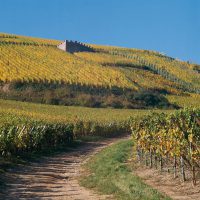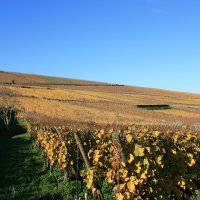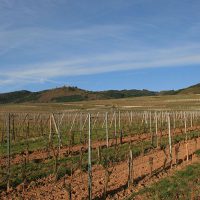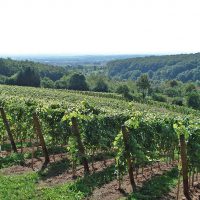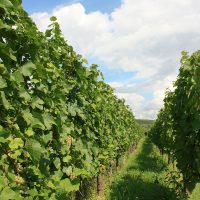Terroirs
The Alsace wine region lies over one of the most formidable geological faults in Europe. The Vosges mountain foothills are comprised of a mosaic of different rocks, which have created very different soils in terms of their physical character or mineral composition.
In addition to the composition of the soil, the altitude of a plot, its slope, its exposure and the proximity of a river or a forest, will strongly influence the life of the plant and the makeup of the grape.
Each vineyard slope therefore produces a wine with a unique character! This is what we refer to as the “Terroir”!
Domaine Paul Buecher works more than 50 different plots. Wines from certain complementary vineyards are blended together to add harmony and consistency to the “grandes cuvées”. The terroirs with the most personality are kept separate and give birth to wines with an assertive character!
Grand cru Brand :
Overlooking Turckheim, Brand lies on south-facing steep slopes. Resting on a twin-mica granitic substrate, the soil is poor and sandy and the vines have to dig deep to take root! This early ripening, warm and sunny terroir creates svelte, subtle Riesling and Pinot Gris wines.
Grand cru Hengst :
Located between Wintzenheim and Wettolsheim, Hengst is east-facing and protected by the mountain range. The calcareous, sandy and clayey brown soils enable a slow, even ripening of the Gewurztraminer and the Pinot Noir grapes, which find themselves at home in this terroir. The wines have a big, broad character, which is always balanced by lovely acidity.
Rosenberg :
Rosenberg is on the eastern slope of the hill that separates Wettolsheim from Eguisheim. The soils are clay-loam, with calcareous rocks breaking through the surface in places. The vines thrive in these deep soils which enables the creation of wines from overripe grapes. The Riesling and Pinot Noir grown here are very attractive.
Gottestal :
Located in Leimbach, to the extreme south of the Alsace wine region, this high-lying plot (400m) boasts an ideal southeast-exposure and sits alone in the middle of a forest. Fairly late ripening in a sandstone-marl soil, this terroir gives the Pinot Gris wine nice body, aromatic complexity and a lovely lively character.

